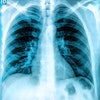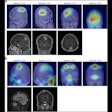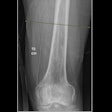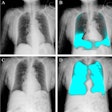Despite the limitations of body mass index (BMI), it remains a good screening tool for identifying children and adolescents with elevated body fat, according to a study published June 3 in Pediatrics.
In an analysis that included 6,923 children and teenagers, a group of U.S. researchers found that a majority of participants with high BMIs also had high body fat measurements on dual-energy x-ray absorptiometry (DEXA) scans, one of the most accurate methods for assessing body composition.
“Although BMI is widely used as a screening tool for high adiposity, it has recently been criticized for not distinguishing between fat and lean mass and not being a good screening tool for high adiposity,” noted lead author David Freedman, PhD, now retired from the U.S. Centers for Disease Control and Prevention (CDC), and colleagues.
BMI is based on weight and height and has long been used as a screening tool to identify children and adults who likely have excess body fat, with obesity associated with adverse levels of cardiovascular disease risk factors and the initial stages of atherosclerosis, the authors explained.
DEXA scans use low-energy x-rays at two different energy levels to provide measurements of fat tissue, lean mass, and bone density based on the differences in absorption of the x-rays by different tissues.
In this study, to more fully assess the ability of BMI to identify obesity, the researchers analyzed its statistical relation to DEXA-calculated fat mass index (FMI), lean mass index (LMI), and percentage of body fat. They used a nationally representative U.S. data set from 2011 to 2018 that included 6,923 8- to 19-year-olds.
A high BMI was defined as ≥ 95th percentile of the CDC’s growth charts (obesity), with a prevalence of 20.6% for boys and 19.5% for girls.
According to the analysis, a BMI ≥ 95th CDC percentile was a very good screening tool for high FMI, with a positive predictive value and sensitivity of 88%. Participants with a high BMI were 29 times more likely to have a high FMI than those with lower BMIs, the study authors noted.
Further, participants with a BMI ≥ CDC 95th percentile were 15 times more likely to have a high LMI than those with lower BMIs and 75% of participants with high BMIs had a high body fat percentage, the group reported.
“Despite its limitations, a high BMI is a very good screening tool for identifying children and adolescents with elevated adiposity,” the group wrote.
The researchers noted that several alternatives to BMI have been proposed, such as waist circumference. However, waist circumference measurements may be challenging to standardize across healthcare providers and are difficult to measure among individuals with high BMIs, they wrote.
“Our findings provide further evidence of the utility of BMI in research and clinical care,” the group concluded.
The full article is available here.



















